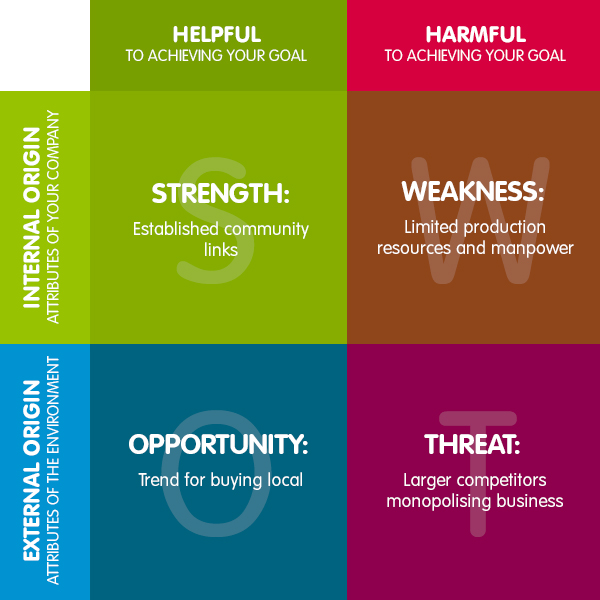
The principle of content marketing is simple: Content attracts an audience and builds trust. Trust, over time, becomes sales.
Making that work in the real world is harder than it sounds.
That doesn’t mean it can’t be done. And it doesn’t mean people aren’t doing it all the time. In fact, new research from the Content Marketing Institute shows that more content marketers are reporting positive ROIs than ever before. We’re all getting more effective.
But there’s still more work to be done. And your content strategy is the best place to start.
Why? Because your strategy has huge effects on your work. Get the strategy right, and even if your execution is a little off, you’ll probably still be fine. But muss up the strategy? If that happens, even if you get everything else right, your results will still be… meh.
That’s why we focus on strategy. That’s also why strategy mistakes bother us so much. It’s cause they’re so expensive – and so easily fixed.
If you’re making any of the strategy mistakes below, please consider changing course. It might cause some disruption to change your plans but you’ll end up with far better results.
1. You don’t know your audience
Know how real estate brokers say “location, location, location”? Well, content marketers should say, “audience, audience, audience.” Because for us, it’s all about the audience. The whole point of content marketing is to attract and engage an audience.
That makes knowing your audience about as critical as knowing your marketing. And it means that if you don’t know your audience… you’re kinda working in the dark.
Understanding your audience means you know
- Where they tend to hang out online.
- How they communicate with each other.
- What questions they have.
- What they worry about – and what they aspire to.
- Where they get their information.
- What their problems are.
Fortunately, fixing this is simple: Get to know these folks. Do your research. Ask them.
2. You don’t know what content already exists in your niche
This is the content marketer’s version of market research. But instead of business models, you want to know who’s creating content in your niche, and who’s connecting with your audience best.
Tools like BuzzSumo can show which pieces of content have gotten the most shares. Or you can curate content from multiple sources, and track which pieces of your curated content get the most engagement.
One classic way to assess your competitors is with a SWOT analysis. Aka “Strengths, Weaknesses, Opportunities, Threats”.
Here’s a template for a SWOT analysis. It could easily be adapted for a content marketer’s purposes.
3. You aren’t committing enough resources to your content marketing
Everybody loves the idea of bootstrapping – of getting big results from a tiny budget. But at some point, it’s time to actually fund things beyond the experimentation phase. At some point, you gotta commit.
Content marketing can be really effective, and really affordable, and generate great ROI. But it can’t do that with insufficient resources. You can’t expect everyone on your team to do three people’s jobs. Content marketing demands creativity, and flexibility and hard work. Chronically starving your program of needed resources hurts all those attributes.
4. You are expecting your content to “go viral” without any distribution effort
This is probably the #1 problem in content marketing right now. It’s even worse than content shock. The fact that 50% of all articles published get eight shares or less is evidence: We need to promote our content far more often.
Promoting your content involves a lot of things. Here are just a few:
- You announce new content via your email list.
- You share – and then reshare – your content on social media.
- You invest in paid promotion for the content that performs well.
- You reach out to influencers (and microinfluencers) in hopes that they will share your content with their audiences.
I know it’s a big ask, but I encourage you to spend half as much time (and money) promoting your content as you did to create it.
We’re supposed to be doing content marketing, after all. This isn’t about just publishing and hoping people will find your stuff.
5. You aren’t correctly tracking conversions
I know, I know: Tracking content marketing results is hard. It’s a thorny topic. But you gotta make it work the best you can. Without good tracking in place, you’re really just throwing darts blindfolded. Who knows which one of your content marketing tactics is working? Who knows which part of your budget is wasted? Who know what opportunities for growth you aren’t pursuing?
Good content marketing software can help with this – a lot. And while it might not be free, and you maybe could build your own in-house solution… you could host your own website, too. Neither project would be a good use of your time.
6. You’ve got unrealistic expectations about how long it will take to get results
Content marketing isn’t for the impatient. Even optimistically, you’re looking at six to 18 months before you see results.
Take note about the “optimistically” in that last sentence. It’s not uncommon for content marketing programs to really not hit their stride for two or three years.
Why? It just takes a long time to build an audience. It takes more time for that audience to really trust you. And then it takes even more time for those trusting audience members to go through your sales process and become customers.
It will happen, of course. But it’s not a fast sell. If you want faster results, do advertising.
You should know that there are ways to reduce the time it takes to get results. You could simply go out and buy a popular blog or magazine. That’s one way to instantly have an authoritative body of content and a trusting audience.
But it ain’t cheap. And it may not be perfectly tailored to your business. Which is why many companies decide to build their own content marketing programs.
7. You aren’t reformatting your content
Good content is way too expensive to be used just one time. It’s kinda like buying a $500 dress and wearing it only once.
So how do you re-use your content? Easy – you change its format. So a blog post can become a video, a SlideShare, and a series of social media updates. An ebook can become the basis of a webinar, and a blog post series, or maybe even the basis of a Kindle book.
Multi-format content works because it gets your work out to new audiences. It also makes your content available for people who prefer different formats. As you probably know, video is having a heyday right now – probably because people feel like they’ve read enough blog posts. Podcasting is doing really well, too – maybe for the people who don’t want to watch videos, and just want to listen to their information.
8. You’re selling instead of educating or entertaining
This one’s hard to let go of. Especially if you’ve got to prove an ROI – and fast. But pushing your products or services too hard in your content will only drive people away.
One of the key reasons content marketing works is because it’s not selling. People hate to be sold to. The second we make a sales overture to them, they’ll trust us no longer. And as you may remember from the opening of this article, the real reason content marketing works is trust. If people don’t trust us – and our content – they won’t listen to us. They certainly won’t buy from us, either.
9. Most of your content is for only one phase of the buyer’s journey
This is an easy mistake to make. It’s especially easy to make if you’re measuring your content’s success based just on share counts and not on actual conversions.
Top of the funnel content (“TOFU”, in some circles) tends to appeal to a broad audience. Thus it gets more shares and more attention. It’s often fun to write, too. And so we tend to make a lot more of TOFU content than any other type of content.
But you need middle of the funnel (MOFU) and bottom of the funnel (BOFU) content, too. In fact, you want a nice variety of content and content formats for each phase of the buyer’s journey. And for each persona’s path. That can end up being a lot of content.
For example, if you have just three types of buyers (aka “buyer personas”) and you’ve got just three phases of their buyer’s journey (TOFU, MOFU and BOFU), that’s nine pieces of content, minimum. Give each phase and each persona three different content formats to choose from (say blog post, ebook and video) and you’re now looking at 27 pieces of content.
Do you have an appropriate piece of content for each of those 27 instances? If not, get cracking.
10. You don’t have a documented content strategy
Ever heard how you’re more likely to achieve a goal if you write it down? And how you’re even more likely to achieve that goal if you give yourself a concrete, measurable goal – and attach a deadline to it? Well, content marketing is like that, too.
The most successful content marketers tend to not only have a well-defined strategy, but they also write it down.
Conclusion
Does it seem like there’s a minefield of mistakes to avoid? I hope not. These ten problems cover pretty much the gamut of gaffes I see content marketers make. Fortunately, most of them are easy to fix.
Back to you
Got anything you want to share or add about content marketing mistakes? Are there any other mistakes I haven’t mentioned here? Tell us about them in the comments.
If you want to get 30 effective techniques to master content marketing along with valuable insights from 10+ influencers like Mark Schaefer, Rebecca Lieb, Lee Odden, Jason Miller or Ian Cleary, download our free eBook now!
Image by Christo de Klerk



